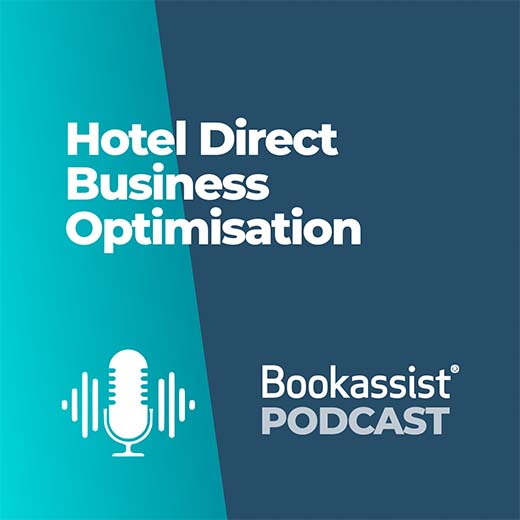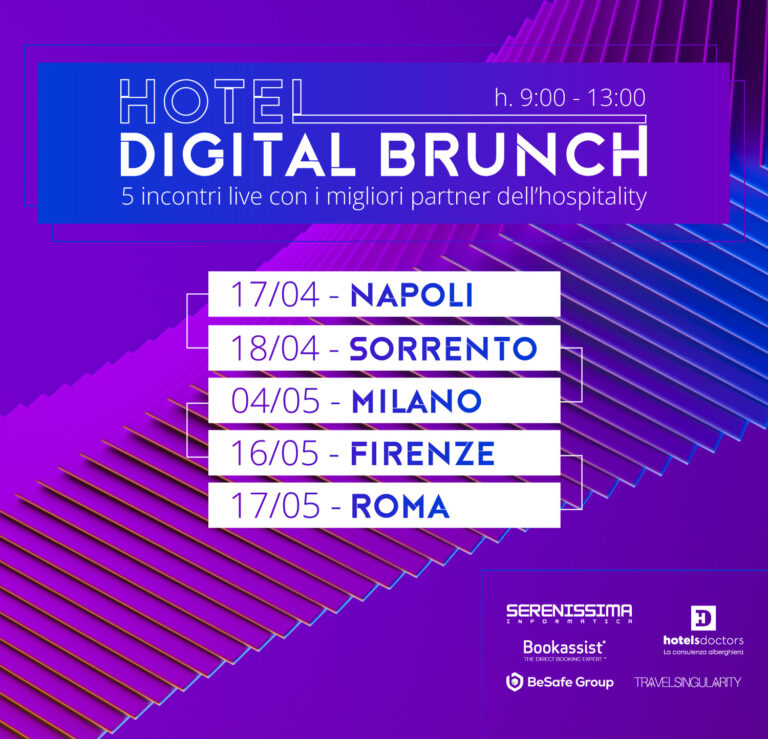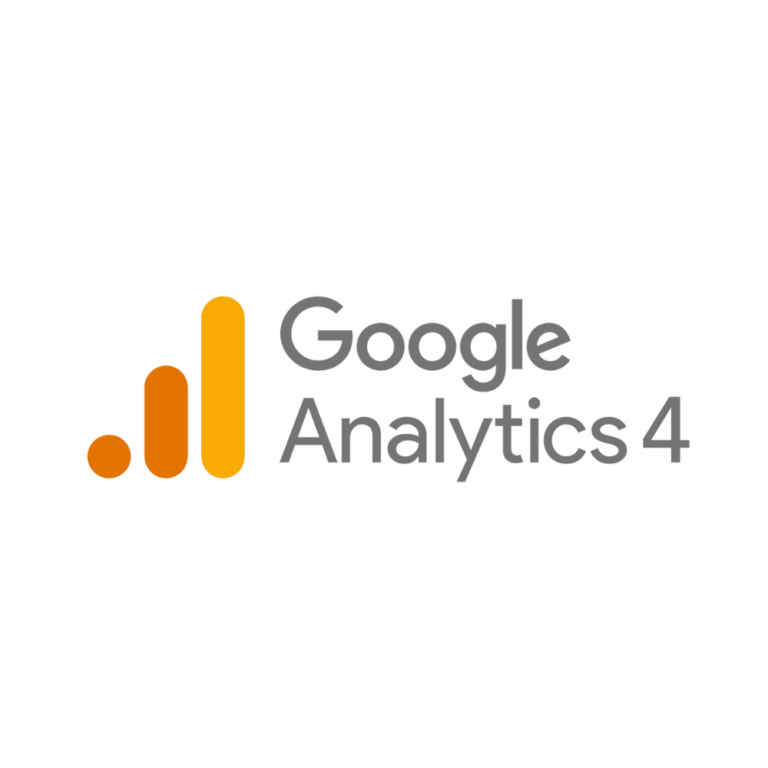By Jason Kelly, Claire Sawier and Dr Des O’Mahony.
What works for you
The relevance of website conversion rate as an isolated metric to guide direct booking strategy was thrown into question and a more relevant and insightful booking engine conversion (BEC) rate was instead proposed.
In this follow-up article on conversion we go further and ask, why are people so hung up on average rates at all, given that there are so many disparate variables? Would it not be better for hotels to look at what’s realistic for them alone, without worrying about everyone else? After all, some really good revenue-generating hotels can have lower than average conversion for really valid reasons (e.g. conversion obviously plummets for dates where a hotel is full).
The real issue when it comes to conversion optimisation is to ensure that everyone who lands on your site with booking intent actually makes a booking and stays at your hotel when you have rooms to accommodate them. This is where efforts should be focused.
Reaching your own personalised and true conversion potential is more important and more relevant than reaching or exceeding any industry average figures. It’s all about what works for you.
Not every visitor has booking intent
You obviously can’t assume that every visitor landing on your website is interested in making a room booking. They may visit your website to book dinner in your hotel’s restaurant or find information about an event being held in your hotel. The reasons for visiting a hotel’s website (or any website) are usually numerous.
Measuring the value of such users is more difficult but the extra visits that these no-intent visitors create is another reason that your website’s overall conversion rate may not be the most useful metric for you to measure success upon. To measure real and relevant conversion, it’s therefore important to measure and manage all key goals on your website and not just room bookings.
Using tools such as Google Analytics, all traffic that is clearly not intended to result in a room booking should be segmented into distinct user buckets and channelled into other non room-booking-oriented goals. To set up user buckets you will need to identify all the non-accommodation services your hotel provides, e.g. meetings, food and beverage, events, fitness facilities, spa, golf and weddings. Segmenting your visitors and setting up specific conversion metrics for each key segment then allows you to focus on the individual metrics that matter for each distinct segment.
Conversion metrics for all users

To measure conversion from users who are not interested in making a room booking, you first must decide on what website actions would be valuable and therefore measurable. Take a user interested in your restaurant information for example – the most valuable action this user could take is to book a table.
Whatever the desired action is, your website needs to facilitate the completion of this action in the easiest way possible. Critically, your Google Analytics or equivalent tool needs to have a goal in place to record the required steps in completing that action, in order to measure the success or otherwise of the page. This allows you to see how people interact and how many complete the desired action.
Remove the noise – focus on booking engine conversion rate
To be clear, when hotels talk about conversion rate they generally mean (or should mean) that to be a room booking conversion rate. Your overall website conversion rate, based on room bookings versus website traffic, becomes less meaningful as you provide more services online so you need to remove all other variables to ensure you are singularly focused on your booking engine conversion (BEC) rate.
By segmenting your users you can therefore focus specifically on this key BEC metric, based only on those users who actually have booking intent.
Controllable and uncontrollable conversion factors

In terms of website conversion there is a lot that separates hotels who achieve figures much higher (and lower) than the industry average and there are quite a number of factors that can cause this number to vary considerably. As a rule, if a statistical average for any measured quantity or performance indicator has very wide variations or deviations, it becomes a lot less useful to an individual as a gauge of success or otherwise. BEC is such a performance indicator, varying to such an extent that average values are relatively meaningless to compare against.
BEC is influenced by many factors, both controllable and uncontrollable. Hotels with exceptionally high BECs typically also experience some favourable uncontrollable factors. For example, they may be located in an area of high demand with a large room stock that can service a high level of demand. Paradoxically you can be a victim of your own success by being in an area of high demand with limited room stock since, once full, your BEC will naturally decline. So averages don’t matter too much for hotels like this.
Likewise, hotels located in areas with declining levels of demand will see decreasing levels of conversion no matter what they do. And five-star hotels will typically see lower BECs than budget hotels almost by definition, with the decision process for luxury stays typically also being a longer one than for budget stays.
Hotels can’t do a lot about these uncontrollable factors but they need to be aware of them and they should take account of them, mitigate against their risks, and take advantage of their opportunities by applying best practices to the conversion factors that they actually can control.
So what do high-converting hotels do to positively influence their conversion rate?
1. They use a high converting booking engine
If your booking engine is not built to convert at a high level, then you are already off to a bad start. Successful hotels give themselves the best chance of success by offering a frictionless booking process. Bookassist leads the conversion charts with our top clients reporting an average 14.8% BEC. As the direct booking expert, Bookassist is laser focused on facilitating a fluid booking process across all devices, with our mobile-first booking engine specifically aimed at the unique needs of mobile bookers.
2. They provide an excellent user experience
Acquiring the right kind of traffic, having availability, and offering clear value to direct bookers are key to improving your BEC. However, if you have all of this in place but offer a poor user experience, your website users may not even stick around long enough to understand the benefits of booking direct.
Irrelevant content, slow page-loading times, complicated navigation, lack of calls-to-action (CTAs), poor imagery, poor language translations, or the lack of security all kill conversion. Building trust through obvious website and booking engine security is particularly necessary, especially when users already trust OTAs with their credit cards. Your website must instil confidence, or you will lose bookings.
For visitors with intent to book, your pay-per-click advertising and your website should guide them directly to the relevant section of the booking engine. Users landing on your homepage should be able to enter their desired dates without difficulty, find your special offers and rooms pages, while users landing on your landing pages should be guided by relevant CTAs or links into other relevant pages. For example, a user landing on a page about your hotel’s family-friendly facilities should be guided with CTAs directly to family offers and links to pages about your family rooms, not just to a generic list of all your availability where they have to fend for themselves.
Hotels that have had their website built by Bookassist can seamlessly integrate special offers from the booking engine into their landing pages in this way. As a result, Bookassist’s web design clients have close to 20% higher BEC than hotels that work with other web designers, and clients that use Booking Engine, Web Design, Digital Marketing AND Metasearch in unison with Bookassist achieve 35% higher BEC than booking engine users only.
3. They open up direct availability
One of the biggest barriers to conversion is a lack of availability. Our data at Bookassist shows that a high percentage of positive availability requests correlates positively with strong booking engine conversion (see Figure 1).

Hotels that return more than 80% of date requests as available have double the BEC of those that have availability less than 50% of the time. This may all seem terribly obvious but if a user can’t find availability for their desired dates, they can’t book. It does not matter how strong you are in other areas that influence conversion.
4. They offer more than just price parity!
The only place a customer should ever be able to get the best value should be hotel direct, but sadly this is often not the case. Hoteliers need to consider total value as a key influencer on conversion, as a better price alone might get you the booking in the first place but perceived better value elsewhere is what likely leads direct bookers to cancel. (Read our article on cancellations for further insights into cancellation rate reduction strategies.)
5. They offer real direct booking value
To affect positive conversion, direct booking benefits need to be clear, explicit, and offer real value to the direct booker – and that means that these benefits should ONLY be available to direct bookers. Again, not only do we see a lot of lukewarm direct booking benefits, but we see indirect OTA bookers by default getting these benefits too. Hoteliers need to take a long hard look at the actual value they are offering direct bookers, and ask themselves if it’s enough to impact positively on net conversion on their own website.
Some hotels offer more value to their direct bookers by providing them with free breakfast, welcome drinks or an airport transfer. This should not be a tick-the-box exercise. You should only offer benefits that you would realistically expect hotel guests to value and actually avail of.
Price comparison widgets are commonly used by our top performing clients. They offer a price comparison against popular OTA websites, as well as listing direct booking benefits so are a useful tool to transmit total direct booking value.
6. They focus on quality traffic with Paid Search and Metasearch
The total number of website users is a useful metric but for most hotels it is somewhat of a vanity metric. Increasing traffic from channels where users have actual intent to book should be the goal. Machine Learning approaches that generate an understanding of users’ levels of intent is increasing advertisers’ ability to acquire the ‘right’ kind of traffic from Google Ads.
Typically, search traffic (both paid and organic) and metasearch traffic contribute the majority of hotels’ website bookings. All of Bookassist’s top performing clients appear on at least one metasearch channel and have campaigns on Google Ads targeting searches for their brand name. Typically, users on metasearch or those searching for hotel brand names are reaching the final stages of their booking journey.
Metasearch campaigns drive traffic to your website and communicate the value of booking direct when your own website has a more favourable price, even before a user may have visited your website. In the example in Figure 2, a user can see that there is a clear benefit to booking direct in comparison to other websites displaying rates for the hotel. Our clients with metasearch campaigns have a whopping 24% uplift in BEC versus those without.

7. They focus on return users with remarketing
Attracting new users to your website is vitally important for feeding your funnel. But there are a multitude of reasons why hotel website users don’t necessarily book upon their first visit. Website engagement and conversion tends to be higher from returning users, so non-converting new users should be encouraged to be return users.
Hoteliers can employ numerous tactics to ensure they remain visible to non-converting users after they have visited their website. One of the most widely used tactics is remarketing. While many will associate remarketing with seeing banner ads related to websites they have previously visited, remarketing can actually be used across Google’s suite of advertising channels – search, display, YouTube and Gmail. You can adjust their targeting and messaging to encourage users to re-engage. Retargeting existing users with an enticing, tangible reason to book direct can give them the nudge they need to return to the hotel’s website and complete their booking.
While remarketing allows you to retarget any website user, it is more effective when users are segmented into buckets. These are called “audiences” within Google’s tools. An audience could be specifically created for users who have interacted with your restaurant while a separate audience can be created for users who have checked for availability or viewed your website’s room pages. A more granular approach could include segmenting your users who have intent to book a room into different audiences – this could be based on interest in product type – for example family rooms, their location, or by the dates they have requested availability for.
Google is not the only platform that allows you to retarget users. Audiences based on visits to your hotel website can be created on Facebook and used for campaigns on Facebook and Instagram. Facebook is often overlooked for this purpose and while it does not have the same reach as remarketing campaigns on Google’s Display Network, we often see better website engagement (bounce rate and average number of pages viewed per session) from traffic generated from Facebook Ads compared to remarketing ads on Google’s Display Network.
8. They use custom Intent audiences
What about people who are interested in your hotel but have yet to visit your website? Google Ads’ custom intent audiences provide an opportunity to directly target these people. Such audiences are created by entering search terms and URLs. For example, you could create a custom intent audience by entering keywords related to the hotel’s brand name and URLs from the hotel’s listings on popular OTA and travel websites.
Bottom Line
Every hotel has its own personal level of potential booking engine conversion. Hoteliers should not be hung up on average rates but rather on what’s possible for them, and they should seek to optimise that. But real understanding is needed in order to determine your optimum level. There are factors outside your control that can limit your potential but if hoteliers take ownership of the factors within their control, the ceiling on booking engine conversion is pushed much higher.
Isn’t it time to take a look?
Jason Kelly is Senior Digital Marketing Specialist, Dr Des O’Mahony is CEO & Founder and Claire Sawier is Head of Marketing at Bookassist, (bookassist.com), the multi-award-winning technology and digital strategy partner for hotels worldwide.






